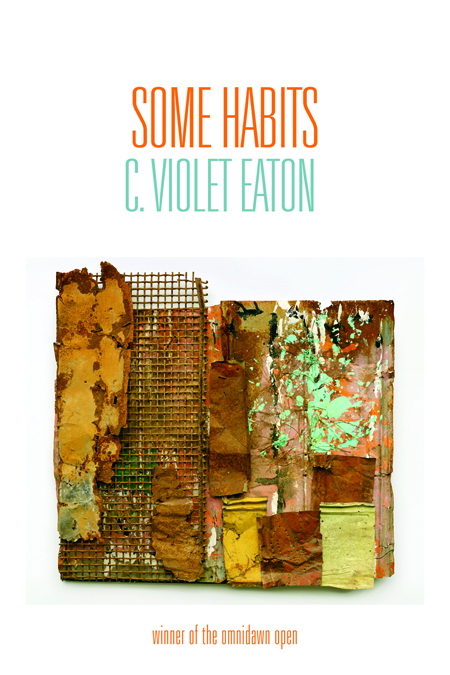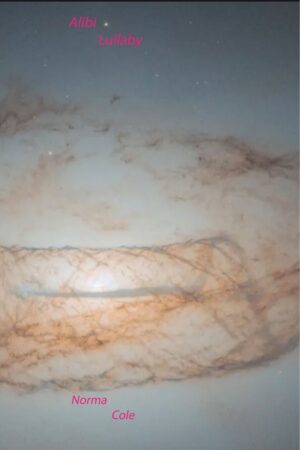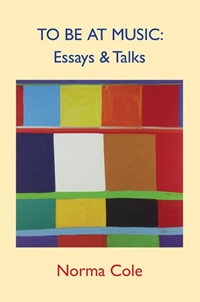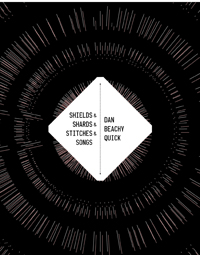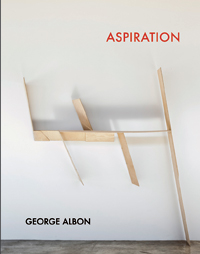Description
Winner of the Omnidawn Open
Selected by Forrest Gander
Some Habits proceeds by way of a series of letters charting the dreams, observations, apologies, epiphanies, outbursts, and habitual tendencies of an unnamed addressor. The poem is infected by the vernacular language of the Ozark mountain region, and by the cultural effluvia that, throughout the twentieth century, washed across the flat lands hemming the Mississippi River. Half ars poetica, half disjecta membra, it invokes real traditions of folk medicine and syncretic magic, while gesturing toward a more contemporary theater: one which acknowledges (and even celebrates) charlatanism, prestidigitation, and lyrical showmanship. A hymn to the other; as disputant, as friend, as lover, as ghost. As guest, and as host. In the manner of the great poetic epistles, Some Habits risks unknowing its subject. Who broadcasts? Who receives?
One of the most stunning books I’ve read in years, Some Habits exalts a kind of Ozark-baroque particularity. Eaton gets “down in the texture” of lists—puccoon, horsemint, flax, and sevenbark, of hermetic numerical sequences, of emotionally exigent epistolary tendernesses that come nested in rural landscape, of 17th century phrasings intercalated with fragments of science and a sensibility as contemporary as “Spaghetti-O’s warmed right in the can” or weathermen grinning “like shits.” The lexicon is so inventively rich and tangly, so hilarious or outrageously sensual, it demands our lingering in it. We want to read as slowly as possible. “Bones intemixt with branches.” What a love poem to the body, to somebody, and to the world!–Forrest Gander, Judge of the Omnidawn Open Book Contest
Forrest Gander, Judge of the Omnidawn Open Book Contest
Some Habits is a folk transmission that demands to be incorporated into all of the planes on which your practice your existence. It is drugs. It is snacks. It is songs. It is in your bed and where you work. It is your leader and idol and boss. Eat it. I don’t care what you believe in, but the sweet source of these poems will say: “I do not believe things are the way things are” and “Such is the America of my work.” You will never be offered a better America. In America, Some Habits is that guy you met at the rest stop, the diner, the dirty dive bar. You knew by his hard old eyes and the weather stuck in his knuckles that he knew you, and you loved him. This book knows your ordinary experiences, the faces that you make, your feelings and the spells that cause them. This is writing that is of, at, and to you—you & someone called David. By this book you are called to be among the friends “that appear as allies, as agents of the presence” that is “on the periphery somewhere.” So find a porch or some substitute & listen to this book. Make a habit of the kind of listening that it demonstrates and it will show you what it looks like to see “in light separate from the eye’s aspect.” Let Some Habits get its hum all over you so that by the light of that hum we will, friends, know “ourselves when we are real.” Get behind the presence. Be this book’s friend. Let yourself be called.
Jane Gregory, author of My Enemies
Epistolary southern gothic horseplay—Delicate and obscene, monstrous and magical, fusty and sparkling, religiously profane—Some Habits is shot through with the details of a real and deranged world: the book wheezes and splutters, yelling and swooning like the bastard child of Captain Beefheart and William Burroughs. Were he alive today Villon would recognize this gorgeous wallowing prognosticator, for here we have true divine lunacy. Eaton has ransacked the house of poetry and run out drunk into the field to die.
Martin Corless-Smith, author of English Fragments: A Short History of the Soul
About the Author
Reviews
Excerpt
C. Violet Eaton is the editor of Bestoned and Rural Harmonics, and the author of a chapbook, No Outside Force Can Harm the Coyote (Free Poetry, 2014). He lives in Arkansas with his wife, the poet Sara Nicholson. He sells used & rare books.
A brief interview with C. Violet Eaton
(conducted by Rusty Morrison)
The poetry editors here at Omnidawn (myself included) are the blind readers who screen for our poetry contests. We were delighted that Some Habits was the manuscript selected by Forrest Gander for our Open Contest. Of course, every excellent manuscript is excellent in its own way, and teaches us something new about writing through its unique nature, but I must say that Some habits surprised us all, and in more ways than we’d expected. As Forrest reports in his Judge’s Citation:
I’d like to begin by asking about the range of the lexicon here, but in order to ask that I’d like to ask, too, about your collaging of forms, a “habit” that seems entirely organic to the work. The manuscript formally oscillates between prose passages and pages that offer minimal lines and maximum textual variation, also there is variation between standard typeface and all caps and italics—all of which allows you to shift radically in referent and register. What I most admire is the consistency, the constellating force of key themes and characterizations which act as gravitational forces to keep the reader centered and sensing. It is as if there’s a congeniality in the voice of the work that makes a reader welcome beside the writing as it travels the near-brink of chaos. I think of the Fool card in Tarot decks—how perfectly oblivious is the fool to the disaster of stepping off the edge, and yet how that willingness to risk is a gift of freedom. How did you conceive the project formally? how did the form come into its own for you?
I like your conceit of The Fool, though the narrator in Some Habits might have more in common with the insane beggar of the older Italian decks.
Like The Fool, I came to this project (as with all projects) by accident. As a writer, I find that I work primarily by accretion, which then I think then logically leads to bricolage. I write in fragments, and when some of them seem like they might be constellating, as you put it, I begin to think about summoning a shape from what the narrator calls “the gaseous miscellany.”
And that’s pretty much how my brain works as well.
But once I’ve opened that front door (or window, or storm-cellar) and I find myself entering the structure, I transform from Fool to Trickster, and the process becomes a little more determined. I like to kick the baseboard, maybe break a lightbulb. That’s the best way I can describe it.
The Trickster turns everything on its head, confuses the bad spirits. The Trickster violates the taboo so that the boundary becomes apparent. He’s also going to shine you.
And I like that idea, too, of TRICKS. I’m into deception, illusion, that sort of Brechtian paradox where you’re both suspending and acknowledging disbelief; the rabbit, the handkerchief, etc.
“How’s tricks?” pulling tricks, turning tricks, picking up tricks, you know. I just finished writing a little something called The Cape Trick.
What else. I like textures. I like things that are a little messy, a little hard to put a hat on.
I dig stains.
One of the many figures of fascination in this text is the character “David” to whom the speaking agent of Some Habits addresses a number of “letters,” though soon in the text we find a shifting of valence with respect to this epistolary relationship. For example, here is a reference to “david” that subverts, but I want to quote the whole page so that the texture of the tropes, as well as the delicious diversity and sly diversions of what Forrest Gander calls your “Ozark-baroque particularity” can be relished by our readers:
desist : : programmoars (I say to them)
All that pleasure in knowing
soft forth mandibles of rock
chamber circle sun We are brightened with
what little magick held
Errata
& Dear fulgor you sort of implied spirit called david
only that reverie
trace of you
Can you speak to your choice of the epistolary form (and your subversions of it) as one of the many recurring motifs in this work?
I’ve always thought of the letter as the most intimate form of address, more so, even, than a diary entry.
There’s this history of epistolary poetics, or poetic epistles (however you get it), and I guess I’ve gravitated again and again to some of the greats: Horace, Dickinson, Van Gogh.
Charles Olson.
I think Keats reaches his pinnacle in his letters, and they remain, to me, some of the most arresting descriptions of beauty in the English language.
With the form, I’m interested, of course, in the direct line between two people, but also the third party’s (reader’s) point of view. It feels a little voyeuristic, I think.
David is a real person, a real friend of mine. An old friend.
Every page of this manuscript was mailed to him by means of the United States Postal Service. I sent one a day. That’s before I ever even sent it out for consideration.
But the “david” in the text seems to encompass much more than my friend, I think, or my friend is rather more than he knows, somehow. I’m not really sure.
It’s possible to write a meaningful email, and it’s perfect for certain things: hey man, here’s a link to that record I was talking about; reminds me of you, etc.
But I think when you sit down with a sheet of paper and pencil you immediately feel the emotional pressure, you know, THE FIRST MARK.
My grandfather (that’s my mother’s father, deceased) used to ask me two questions every time he’d visit. The first was “What have you been doing to better yourself lately?” and the second was “Are you keeping up with your correspondence?” It was always with a showman’s wink-and-nod that he asked, coming, as he did, from television, radio and the stage.
That first question’s almost unfair, really. Too existential.
But I like to think I’m always in good standing on the second.
My address is P.O. Box 234, West Fork, AR 72774.
I am mesmerized by the remedies, by the lists in Some Habits, for instance:
pupbag of bitchdog : tansy stiff w/ bran
asarum : triphyllium : geranium : oak
chimneysoot is balm for cuts, tho
bulletholes want silk
sevenbark : ninebark : sheepshit tea
acker fortis cure the etch, or
slug of kerosene
the black ant powdered, mixt w/ lard
will prod an infant slow to walk :
will jake the curses slow to take :
shall cut the verses to the quick :
I trust that these are actual terms and names, and that some are indeed ingredients of remedies that you’ve heard recounted. And, they are, in a sense, figures of an ars poetica accounting of elements and the power they have to engender insight that is beyond simple paraphrase. I hear echoes of CD Wright’s Deepstep Come Shining, which is one of my favorite books. Though you certainly are your own poet. I am intrigued that the “black ant powdered, mixt w/ lard” has three possible uses, and that the last might be read as “cutting” through any expectations we have for “verses” and exposing what is within that un-named “quick.”
Can you speak to the metonymy at work when you cull such language from the actual and distribute the language in the masterful ways that you do in this work? I should say that I am bewitched by the syncopation of your lines. It’s my sense that the music in these lines manifests quite a spell on a reader/listener, certainly that spell may be as potent as what the substances might yield to someone ingesting them.
I think I have a good ear, both rhythmically and harmolodically. That is to say, I feel “grounded” in the ear, and by extension, in the speaking voice. It’s definitely a somatic thing.
SPELL, yes. I am interested in the intoxicating effect of certain syllables, certain rhythms. That’s why I named my journal Bestoned.
Rhythm especially. A lot of mine is subconscious; from music, from physiology. I often use vernacular rhythm, much as the herbal remedies are themselves vernacular medicine. Looking back over those lines, it seems obvious to me that I’m playing with children’s skip-rope and counting games. There’s some definite “double double / toil and trouble” stuff going on in there too, which is appropriate.
I’m thinking of that Spicer poem, “Magic” . . .
The vernacular is where you find so much of that: it’s like how Western art music investigated harmony to the conclusion of atonality; around that same time you turn to 20th century popular music, and so much of that is the constant evolution and reorganization of rhythm.
I just have this hunch that it’s going to be the same thing with poetry; there’s this anxiety in post-Language writing because the “harmonic” quality of the work reached the extreme of total semantic dissonance in some cases. Where do you go from there? Maybe somebody’s going to dig up some fresh new rhythm and everyone’ll just start nodding their heads. There’s a lot to explore.
As for the material itself? Much of it comes from the inimitable Vance Randolph, some Harry Middleton Hyatt. Lots of regional, self-published pamphlets.
In general, I steal the things I like the most, the things that get me itchy. I usually trust that it will work out. People who read poems are willing to give you a lot of rope.
Sometimes I’m just collecting and preserving Unusual Human Data.
Presenting it in what I hope is an interesting way.
Who are the authors with whom you feel a kinship? Could you talk about the writers or thinkers who have influenced you in this work? And/or who are you reading currently?
I’d feel odd claiming kinship with anyone; that’s a two-lane highway.
Let’s say I admire certain writers: Whitman, Dickinson, the Romantics, the Metaphysical poets. Lorine Niedecker, Joseph Ceravolo. I could list a lot of names.
While I find some of his short poems a little suspect, Frank Stanford’s The Battlefield Where the Moon Says I Love You is the Ramayana of poetry; that is, if Leaves of Grass be its Vedas.
I read poets in translation too, of course, but that’s a special kind of problem I’d rather not get into.
Martin Corless-Smith and Susan Howe are two living writers that have influenced me enormously. The way they blend the lyrical and the textural, the seamless and the disjunctive, the philosophical, the personal, the allusive, and especially the way they engage the history of poetic language; I admire these qualities deeply.
Other living poets? Clark Coolidge, Lance Philips, Caroline Bergvall, Philip Jenks.
I’ll be honest and say I’m probably less aware of the contemporary scene than most poets my age. I’m not on social media, and I don’t read any poetry blogs. What I do know, I pick up on at readings (the true venue of poems), or through the recommendations of friends.
I should say all of my close friends are, to me, what’s really happening. I have my smallish ring of confederates, and, lucky for me, they are wildly talented. Our interests intersect, even where our projects differ in the details.
That’s where it is. Because you’re seeing all the stuff that falls through the cracks, the stuff that never gets published: the failures, the parts you throw away. “You show me yours, I’ll show you mine,” like that.
And so you get to know them more completely.
I’ll single out Tim Earley; he’s a magician. There’s a kinship there, for sure.
Tim wears his mountain mouth by the grace of God, while I had to choose that particular divinity as an older man, like in the Sanctified churches. And so.
We’d have gotten into some trouble if we had grown up together.
In terms of this project, Kate Greenstreet’s Young Tambling was a revelation. Especially having seen her read from it. I like how her texts are potential scores or performance notes; how the work gestures toward the staging itself: when you see her read, she’s flipping the pages back and forth and sort of alighting on certain elements, allowing the thing to reconfigure itself in the moment.
That’s something I want to play with when I start reading in support of this book, because while I like to think of Some Habits as a single long poem, it’s really more an agglutination of smaller fragments.
Usually I find myself reading things other than poetry. I’m attracted to anthropology texts, musicological studies, folklore, oral histories, miscellanies, curios and oddities.
The best part about working in a used-and-rare-book shop is finding things like Crescas’ Critique of Aristotle, or Arkansaw Mounds, or The Museum of Mankind.
Reynolds’ Beards: An Omnia Gathera, that’s a good one.
I often read for texture, for mood; I feel no compulsion to finish a given text, or even to proceed in a linear fashion.
Nietzsche, Kierkegaard. Genet, Céline, Bernhard, Beckett.
The Anatomy of Melancholy. The Popol Vuh.
Lucretius. Sir Thomas Browne.
Would you tell me a bit about yourself? Anything you are willing to share that might not be in your short bio that is published in the book?
My pool game is consistently mediocre with flashes of sustained luck.
You were actively involved in the selection of the image that is used in the cover design for this book. Would you describe the search, your hopes for the cover image? How this cover may fulfill your desires, intentions?
Jane Gregory and David Vandeloo bought and sent me this gorgeous book I had been pining after for some time: a massive thing called Souls Grown Deep: African-American Vernacular Art of the South. It is for this & other reasons that I consider them VERY NICE PEOPLE.
One of the best essays I’ve ever read, Amiri Baraka’s “Revolutionary Democratic Art from the Cultural Commonwealth of Afro America” . . . that’s in there, among others.
Anyway, the work is stunning throughout, and I was pretty sure I wanted to use something for the cover of the book.
I was hooked at first by a sculptor named Lonnie Holley, who’s still alive and working, though in the end I think everyone involved, including myself, felt his pieces might impose their particular narrative a little too forcefully.
I was still convinced I wanted to use a sculpture or three-dimensional object, rather than a flat image. We were looking for something assembled, layered, viscerally textural, which I think complements the form of the poem.
I ended up selecting this piece by Ronald Lockett, an artist from Bessemer, Alabama, who died in 1998 from complications relating to AIDS. It’s an assemblage of tin, nails, paint, pine straw, and a metal grate mounted on wood, so it acknowledges both the industrial and the organic, but in their decayed forms. I like how the grate especially alters the dimensions by introducing a layer you can see through.
The Souls Grown Deep Foundation was kind enough to allow me to use Lockett’s sculpture for the cover of Some Habits. You can visit them at soulsgrowndeep.org to learn more about the artists and view their work; I highly recommend it.
As with everything else in the book, I’m incorporating the textures I’m drawn to: when I drive up Arkansas 71 on my way to work I never pay attention to the Arvest Bank or to the bright and tidy Dollar Generals (3 in all); I’m looking at the camelback truss bridge behind the Baptist Ford Church, the quonset hut that says OZARK STEEL CO. in metal (could that be Art Deco?) lettering.
I’m noticing Vaughn Battery Co. with its stacks of car batteries out back and wasps’ nests hanging in the windows.
I’m checking out the periphery.
Winner of the Omnidawn Open, Eaton’s first full-length book presents a series of prose poems cum letters offering physically and emotionally rich meditations from a speaker seeking to connect: “I can call us complicit, or I can sit here on the porch and worry on us, hard. Neither thing is there. The hum is there.” And what a hum. Shunning descriptive excess for the concrete (“Nimbus borne up, loud like a filament. A jay. Wasp”), this work reads like a Joseph Cornell box come alive.
Throughout this absorbing, delectable collection, Eaton continually returns us to a world in which language is as present and palpable as a “floor cluttered with pine needles before someone swept”…
Dear David,
Closed like a system, night sounds off : hounds bay, cicadas drone, wampus chuffs like a hog. Sparrows are hovering over the interior belt. they get tall. they chirp : welcome to our nervous vespers. A lot of us are here within it. down in the texture.
Were I not got half a heart so fits.
I discovered this morning upon waking that I did get a good drunk or so out of my weekend. a good page too : that’s from the notebook. I work both into the text, slowly, altering for sound or for rhythm, listening through the form & into the space the blood hits.

